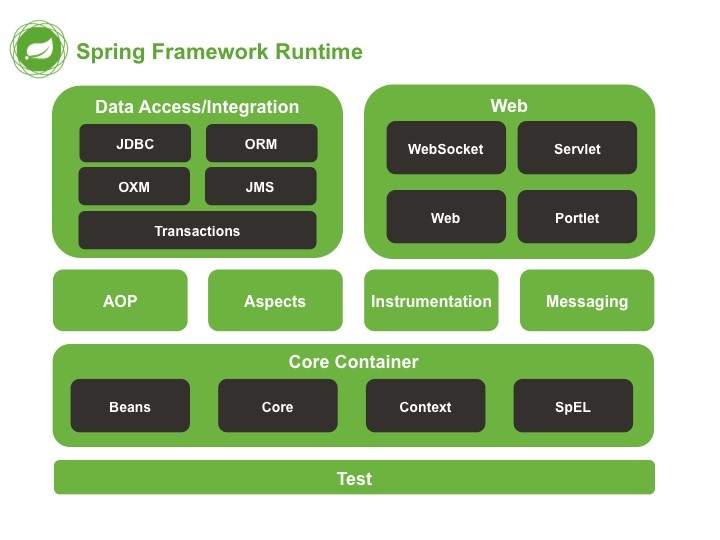本章简要介绍一下Spring的核心模块:依赖注入、切面。并介绍一下Spring的模块组件,对Spring有一个简要的了解。在后续章节将详细学习Spring的DI、AOP等核心组件。
1.依赖注入(DI)
传统的代码编写方式,例如一个Student类中创建了Arm、Leg、Body等对象,那么我们需要创建Student对象时,他就会按照类中写死的那样去创建固定类型的Arm(麒麟臂)、Leg(飞毛腿)、Body(大胸肌)这些对象,如果我们想动态的给这个Student换零件儿的话就要重写或新增一个其他类型的Student。但是有了依赖注入,我们可以在创建Student对象时动态的给他注入各种类型的子对象。这样就降低了代码耦合度,这也是依赖注入所带来的最大收益。
|
|
|
|
|
|
输出细小的手臂被创建了...
使用构造器依赖注入Arm
我们给Student新增一个带参数的构造器,以让Spring对其进行注入Arm。
|
|
通过Maven引入Spring相关jar,或直接往项目里导入jar。就不写了。
创建Spring配置文件
|
|
读取Spring配置文件并获取Student对象
|
|
输出麒麟臂被创建了...
就此最简单的依赖注入Demo就完成了,简单吧。记住依赖注入最大的收益:让相互协作的组件保持松散耦合。
2.切面(AOP)
切面有什么用呢?
加入我们有一个一一大堆查询、插入、修改等函数,需求是需要在所有插入方法执行前先记录日志,传统的方法时在每一个insert函数的第一行去写这样的日志存储,就算聪明的你写一个工具类,最终在insert函数中以一行代码的方式完成了这个任务,但当这个工具方法还是会重复出现在各个inser函数中,很low好不好?
而且类似日志记录、公共逻辑校验这样与业务无关的代码会让函数变得会乱,我们要做的就是在业务函数中只关心业务代码,其余的这些什么日志操作,别来烦老子。我们就用Spring的AOP来解决这个问题。
传统的LowB案例
建立一个公共方法类
|
|
Student类中新增这些方法,我们能完成任务了。
很累啊有木有
|
|
主函数
|
|
输出麒麟臂被创建了...
我是公共方法,我要在所有的插入操作前调用...
我是Student.insertA()
我是公共方法,我要在所有的插入操作后调用...
我是公共方法,我要在所有的插入操作前调用...
我是Student.insertB()
我是公共方法,我要在所有的插入操作后调用...
AOP最简单的例子
Spring配置文件
|
|
Student的插入方法工具代码已经去掉了
|
|
同样执行Main函数输出麒麟臂被创建了...
我是公共方法,我要在所有的插入操作前调用...
我是Student.insertA()
我是公共方法,我要在所有的插入操作后调用...
我是公共方法,我要在所有的插入操作前调用...
我是Student.insertB()
我是公共方法,我要在所有的插入操作后调用...
3.Spring容器
3.1 应用上下文
Spring自带了多种类型的应用上下文,我们最常使用的应用上下文是ClassPathXmlApplicationContext,它将从应用的类路径下加载上下文,以初始化Spring容器。
|
|
3.2 bean的生命周期
传统的Java应用,我们创建对象使用new关键字,不用了以后由JVM的GC机制自动回收对象。简单的一匹。
但是在Spring中,对象的生命周期就复杂很多了,如以下步骤:
- 1.Spring实例化bean
- 2.Spring将bean的引用注入到bean对应的属性中
- 3.如果bean实现了BeanNameAware接口,Spring将bean的ID传递给setBeanName()方法
- 4.如果bean实现了BeanFactoryAware接口,Spring将调用setBeanFactory()方法,将BeanFactory容器实例传入
- 5.如果bean…ApplicationContextAware…setApplicationContext
- 6….BeanPostProcessor…postProcessBeforeInitialization()…
- 7….InitializingBean…afterPropertiesSet()…
- 8….BeanPostProcessor…postProcessAfterInitialization()
- 9.此时bean已经准备就绪,可以被应用程序使用了,bean将一直存在应用上下文中,直到该应用上线文被销毁。
- 10….DisposableBean…destroy()…destroy-method()…
4.Spring模块
Spring4.0的框架发布版本包括了20个不同的模块,每个模块会有3个JAR(二进制类库、源码的Jar、JavaDoc的Jar)
这些模块一句其所属的功能可以划分为6类不同的功能。
Spring核心容器
容器是Spring框架最核心的部分,管理Spring应用中bean的创建、配置、管理。SpringBean工厂、DI、E-mail、JNDI、EJB都与之相关。
SpringAOP模块
面向切面开发的基础。
数据访问与集成
抽象JDBC的样板化代码->JdbcTelmplate。
构建数据库服务的错误信息为一个异常层。
集成ORM框架->Hiberna、JPA、JDO、iBatis。
基于JMS(JavaMessageService)的抽象层。
使用AOP模块为Spring应用中的对象提供事务管理服务。
Web与远程调用
MVC的基础。
集成RMI(RemoteMethodInvocation)、Hessian、Burlap、JAX-WS。REST-API。
5.小结
本章知识对Spring的内容有一个初步的认识,第二章将深入学习Spring装备Bean的内容。


